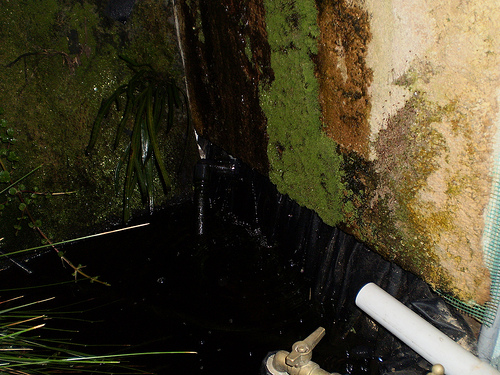
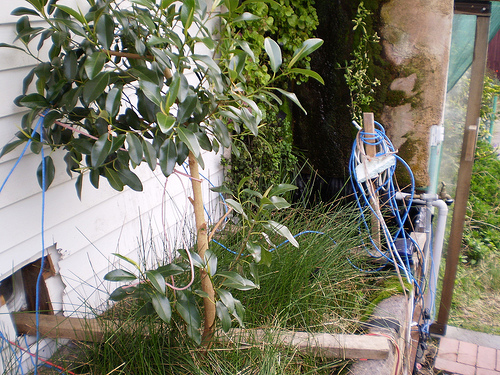
The first wootank was made a few years back as an experiment in low cost custom tank construction. I wrote about it about three years ago on my blog.
It has been operating reliably for the last three years, with no signs of deterioration (beyond the initial design flaws this new tank hoped to address).
pfh kindly takes photos every now and then:


fish and water storage
Dad wanted to do something with the water off his back roof, so I suggested this.
My brother is keen on keeping fish, and mum wants to be able to irrigate plants with flood and drain (low water cost, low operational cost).
Its amazing how nice it was to just move 2.5 m^3 of dirt: progress is evident, instant feedback, and you feel great after all the exercise.
There is a company in Melbourne that makes plastic water tanks called plastank. This is a wooden tank, hence wootank.
Capacity? 4kL give or take a silver perch
Peter asks: "are you comfortable with the weight? what's underneath it? my initial impression of where it is (and my memory of the house) is that there's wood under it. (i know it's a bit of a silly question after it's already built, but better before it's filled at least.)" It actually sits on crushed rock on original subsoil. (we cut back to the subsoil). Then a sheet of cement sheet protects the liner from sharp pointy teeth in the crushed rock. Then there is the liner. There is no load bearing vertically at all, the sides are merely to stop the liner from flopping on the ground.
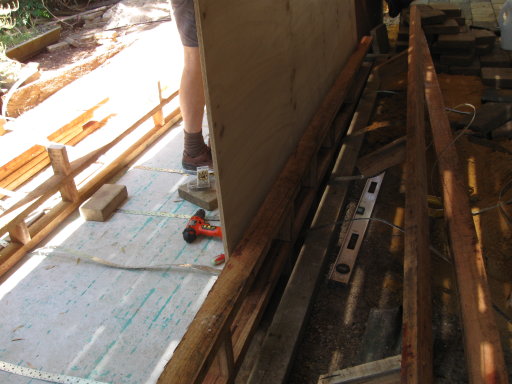
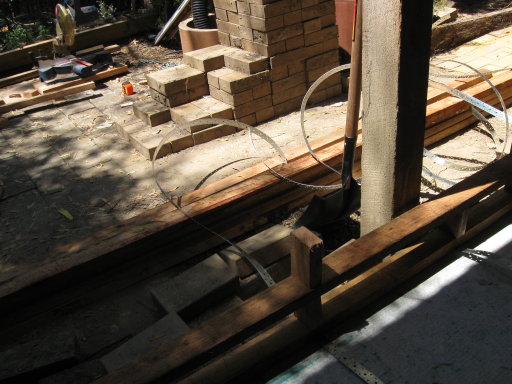
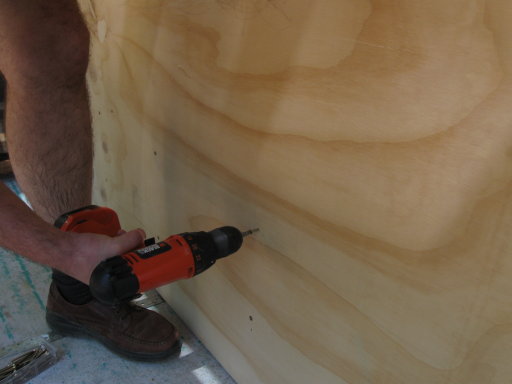
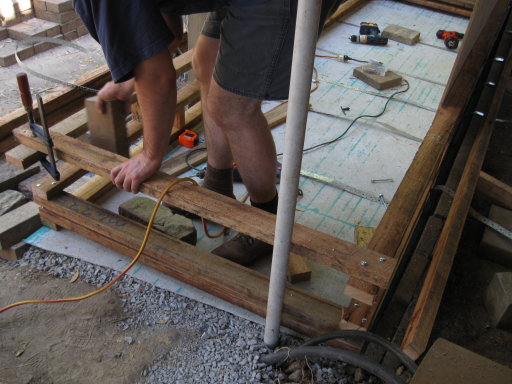
To test it we put all the other tank water into it, which gave us about half a wootank full. There was no hint of bulge, unlike the first tank, which ended up needing a steel girder added to the side to make it workable.
We have had quite a bit of rain over the following weekend too, and it has been filled to the overflow. My brother reports there is no measurable bulge. So this tank is over engineered.
Peter asks: "how does woo compare with plas ?"
It turns out cheaper by volume ($1.5k for 4.5 plastank, this cost $1.2k), but more importantly if you want a non-standard shape this is your only option. It's also interesting to look at.
A round tank is more materials efficient, an interesting puzzle is what is the optimal shape.
Peter says "Whereas in Melbourne, available spaces are often rectangular".
Notice the spacing on the rails on the sides. It was fun to work out what that spacing should be. It turns out to have a simple, fixed rule.
The vertical strapping positions are not so clear, so I just made something up which looked nice, was easy to calculate and felt right.
The reason there are more in the middle is because the ends are well supported by the numerous bracings, and there is only half the water loading on the end. The bending moment on a beam goes up as the cube (in this case, I think), so we expect more force in the middle sections. Then we make it up.
there are in fact termites in my parents garden, but the tank is made of the same wood as the fence, which has not had a termite problem in 30 years, so I think that's fairly safe.
It will need a coat of paint every now and then to protect from the weather, and not look too peelly. The fact that it sits on crushed rock with air access will protect it I believe, combined with Melbourne's dry climate. It's also under the balcony, which protects it from the worst of the weather.
It gets morning sun, which might damage the liner.
Unlikely given its lack of movement on filling, and previous experience.
By far the most damaging affliction in my parents house. There is a very good chance that the liner, ply, hoops and framing can all be re-used in a new project.
I'm guessing it will last at least 20 years if well maintained, which is probably all that can be said for plastanks.
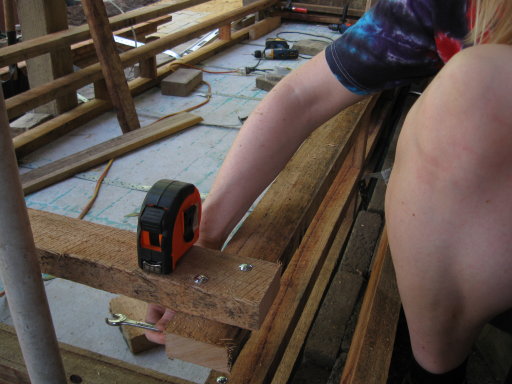
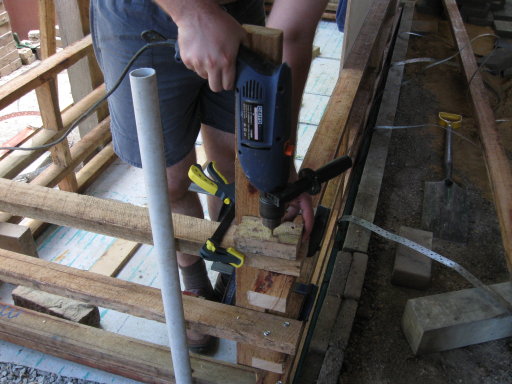
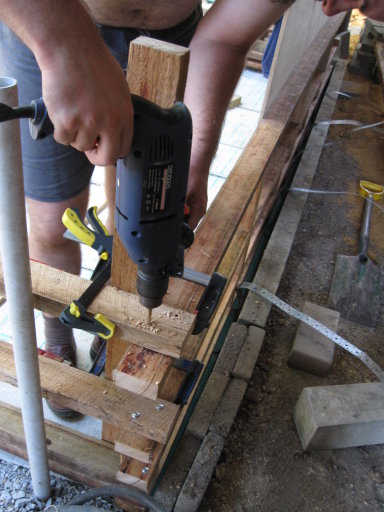
The frames are self contained rectangles made with fencing railing hardwood. Unlike the first tank, there is no lapped joint, instead we rely purely on the shear strength of the bolts (a few tonnes at a guess) and the wood (lower).
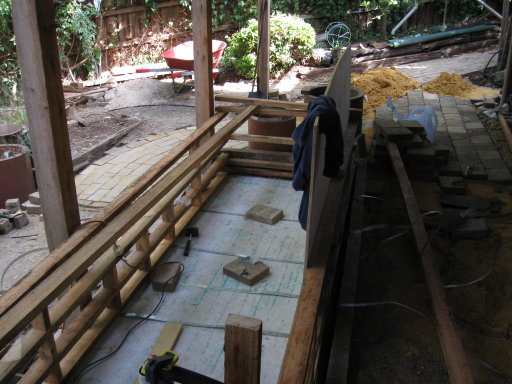
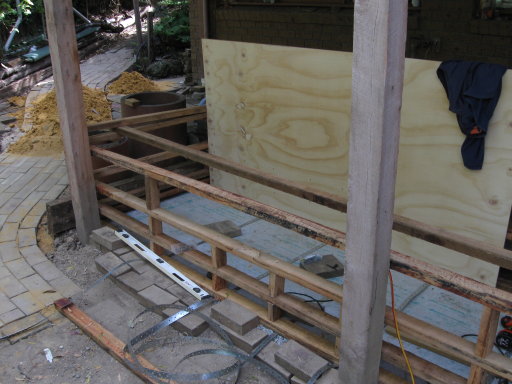
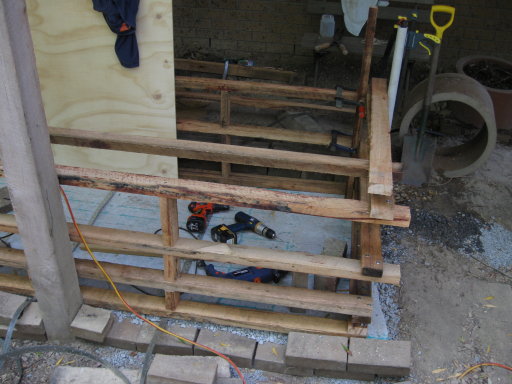
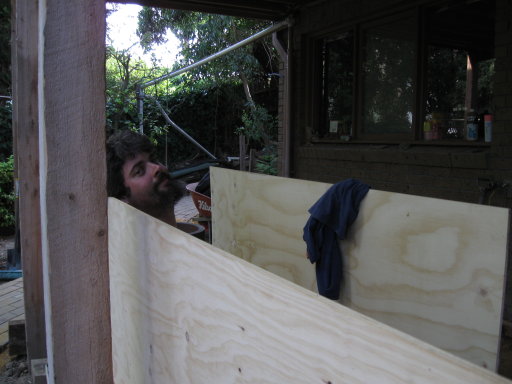
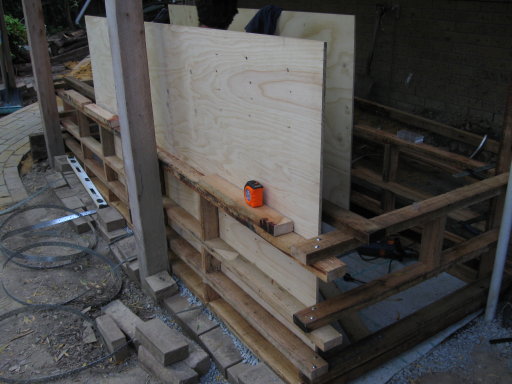
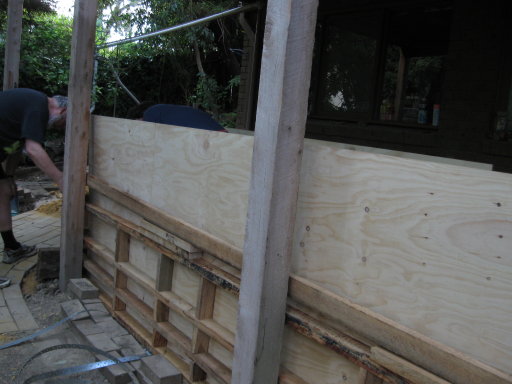
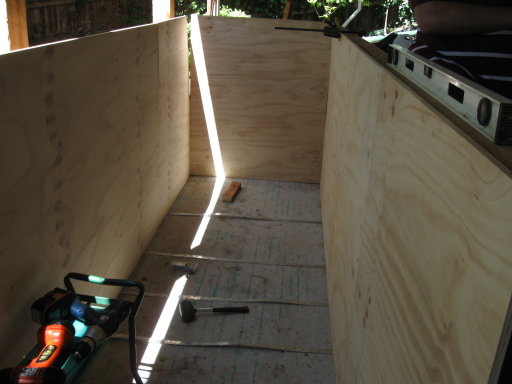
The biggest deviation from the wootank 1 is that the ply sits on the inside of the frame. This loses some capacity, and gives it a distinct exoskeleton. However, it also saves about 1000 screws, the plywood basically just rests against the frame. We use 5 frames rather than 3, which had a huge effect on rigidity, and we have these vertical blocks between the frames (which aren't attached btw, merely gravity and a small tack holds them in place).
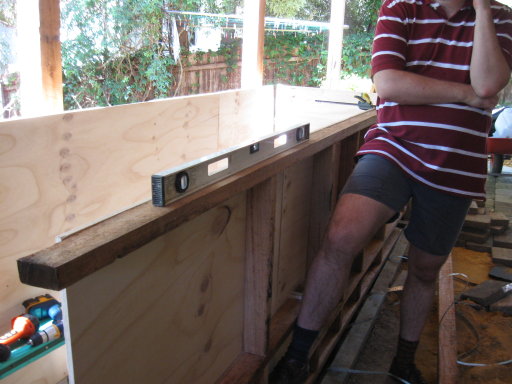
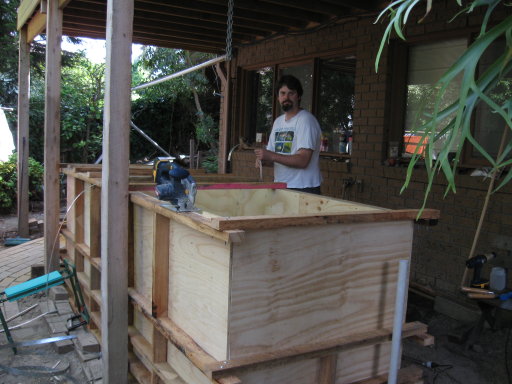
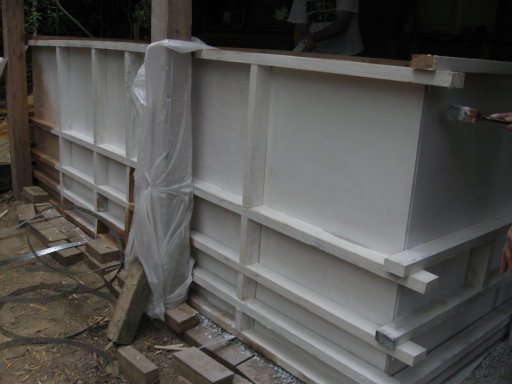
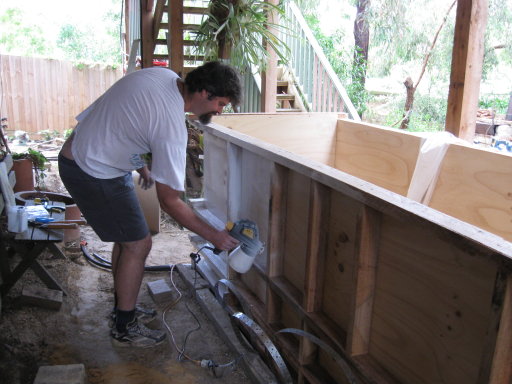
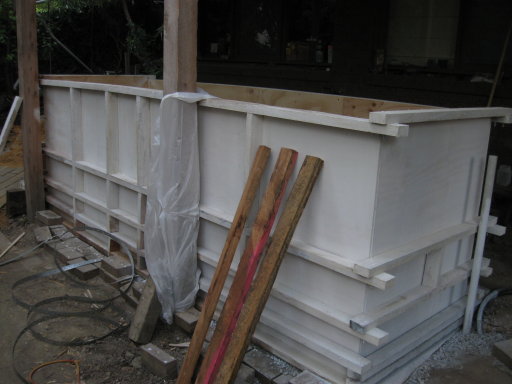
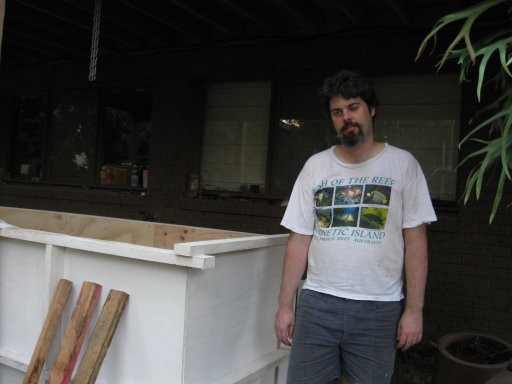
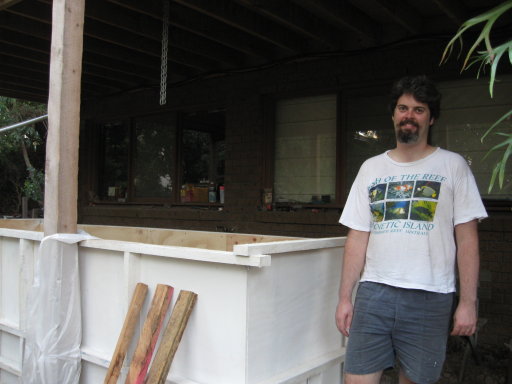
We decided to paint it to match the balcony (pale eucalyptus) to protect the wood a little more. The undersides of much of the wood is unpainted to allow the timber to dry a little more. My main concern is actually sun damage, which can destroy even hardwood quite quickly outside.
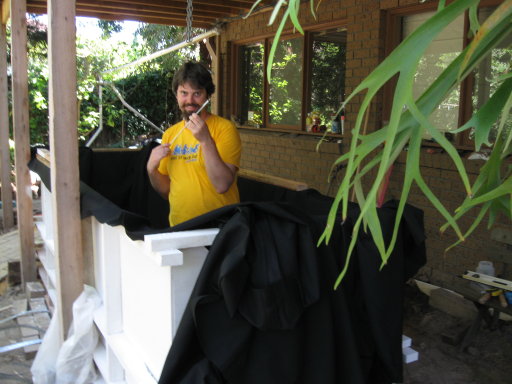
When the tank is empty it is easy to climb in and fetch those screws and offcuts and whatnot from the bottom. Once full we need the special fiksturegrübber tool.
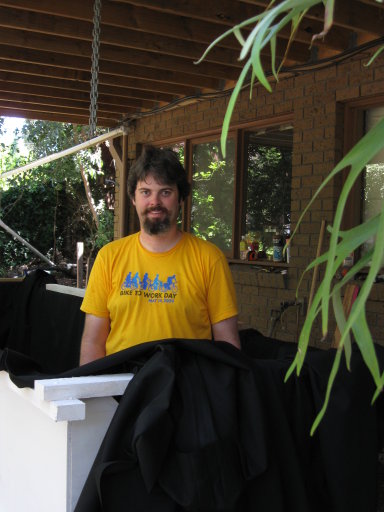
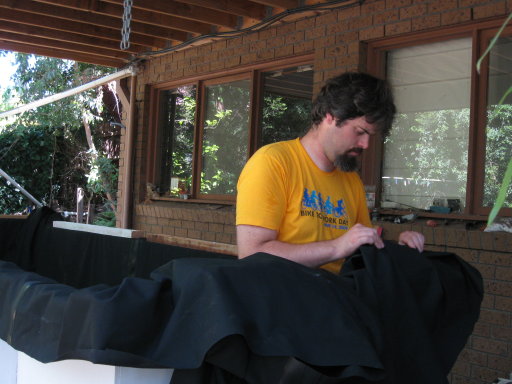
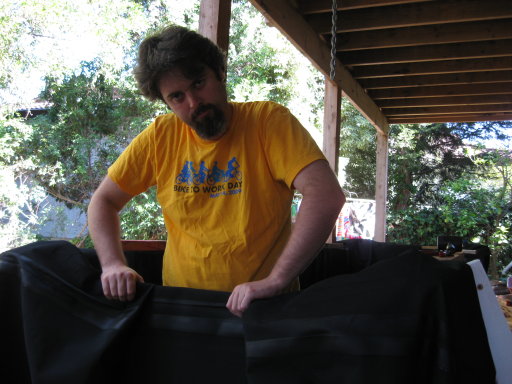
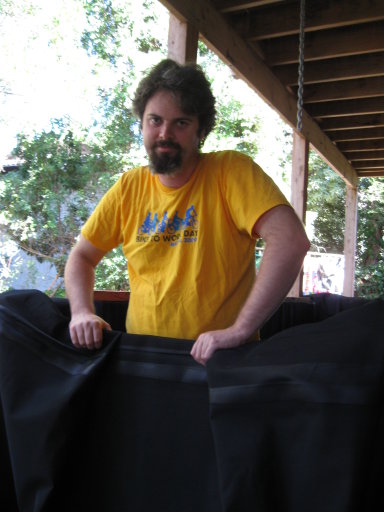
Getting the 'chinese takeout box' (as Nick Pine calls them) folds right is fiddly work, after working my way around getting everything neat and tidy I had to have a nap in the bottom of the tank for an hour (it was a hot day).
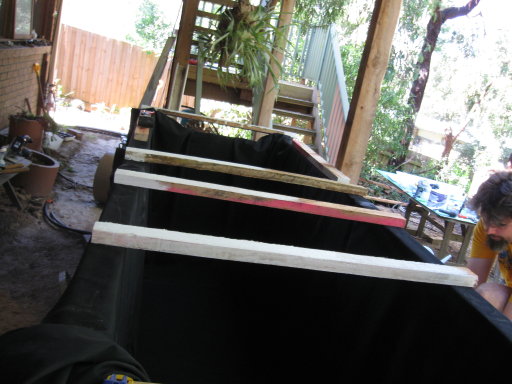
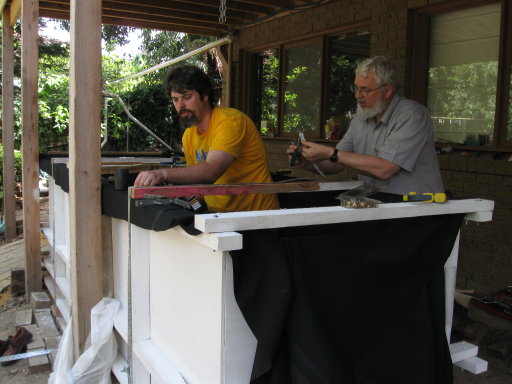
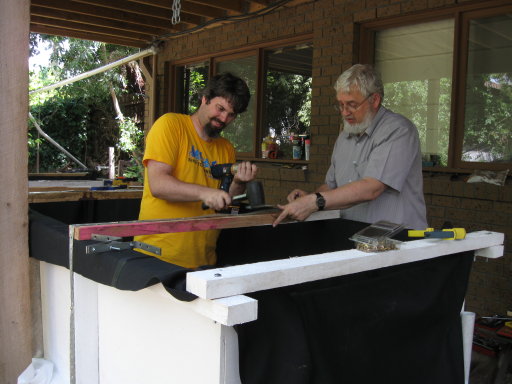
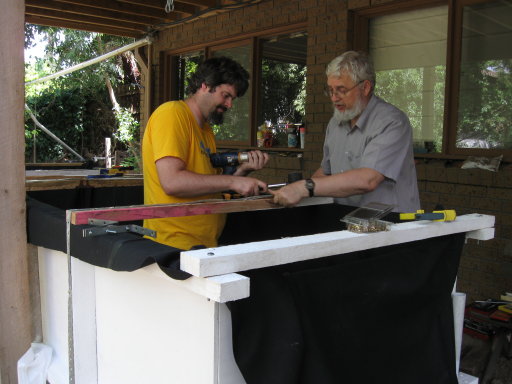
Once the liner is in place we put on the 5 bracing pieces and the 5 steel hoops. (It's much easier to put these on before starting work, but make sure you tie them out of the way or you'll spend the day cursing as you trip over them again.
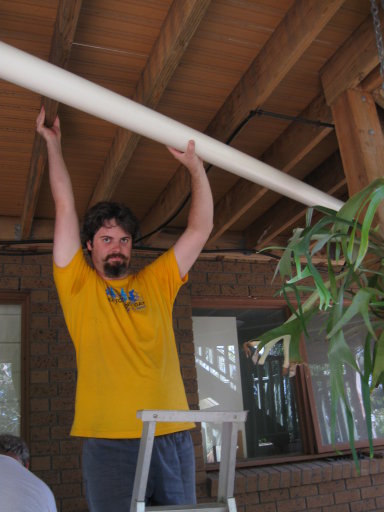
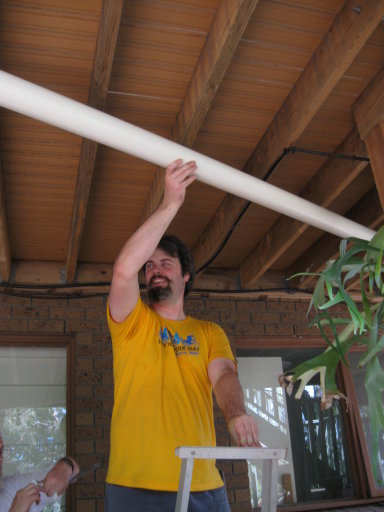
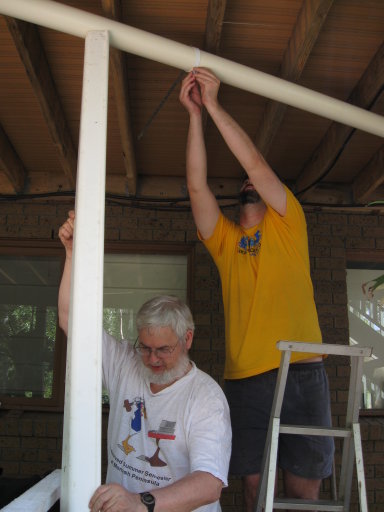
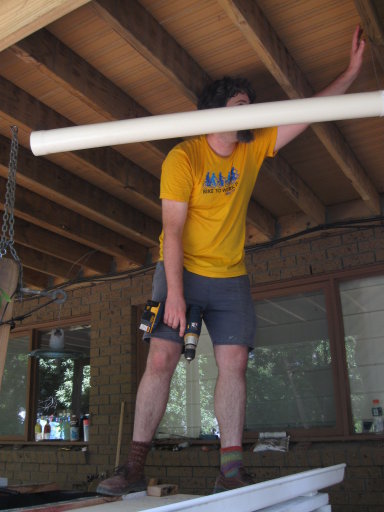
Finally, we realligned the existing guttering to dump straight in the wootank with a few pieces of pvc storm pipe. The white guttering you can see in the last picture is the overflow, made simply as a short length of guttering that feeds into the existing leechfield (also known as the pond, with real leeches - Heliobdella Fred tells me).